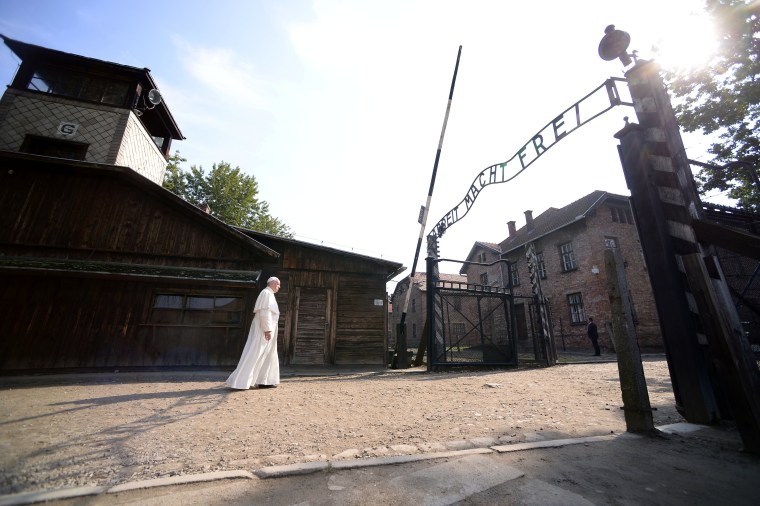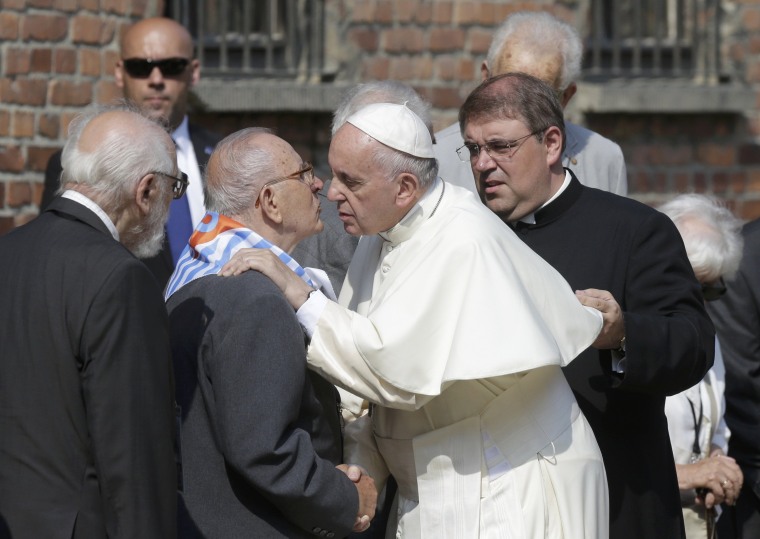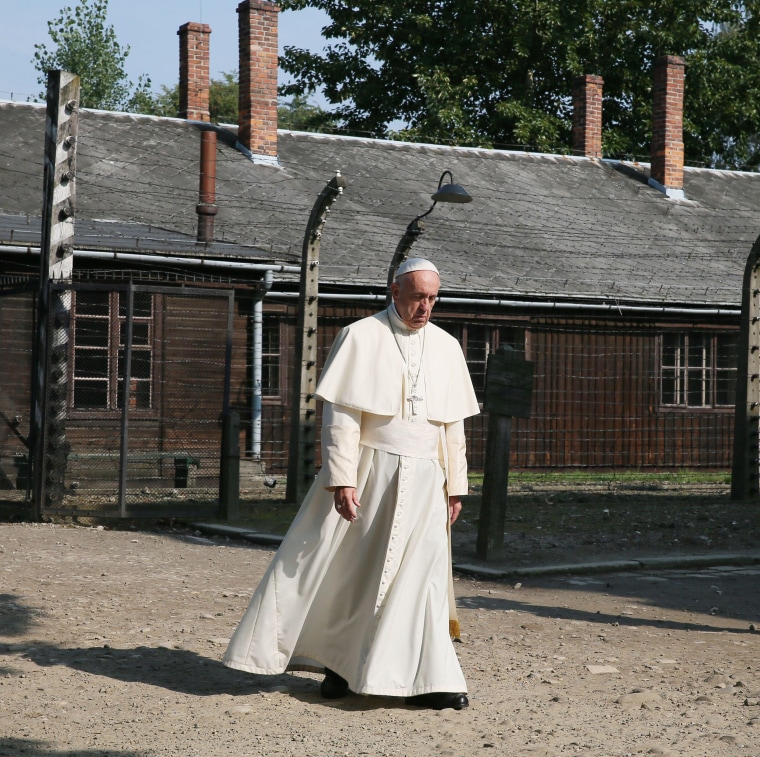Pope Francis made a mostly silent pilgrimage Friday to the Auschwitz-Birkenau death camp but his very presence on the Nazi killing ground spoke volumes.
"I would like to go to that place of horror without speeches, without crowds — only the few people necessary," Francis said before embarking for the forbidding spot in southern Poland where the German occupiers murdered more than a million people, most of them Jews. “Alone, enter, pray. And may the Lord give me the grace to cry.”

And Francis kept his vow. His only public words were written in Spanish in the Auschwitz guest book: "Lord, have pity on your people. Lord, forgive so much cruelty."
Rabbi David Sandmel, director of interfaith affairs at the Anti-Defamation League, said what happened at Auschwitz during World War II "beggars description."
"There are moments where silence can be more eloquent than words," Sandmel said. "By not making a statement, Pope Francis is setting this place apart and this event apart. It’s his way of saying this is not simply another stop on my itinerary where I say some words, everybody applauds, and we go on."
Francis is not the first pontiff to visit the infamous Nazi death camps, where tens of thousands of Polish Catholics, Roma and others were also killed.
"Now, no Pope can go to Poland without stopping at Auschwitz and acknowledging the Holocaust."
His Polish predecessor, Pope John Paul II, who survived the German occupation of his homeland and made it his mission to repair the centuries-long rift between Catholics and Jews, went in 1979. Pope Benedict XVI, a German who was forced to join the Hitler Youth as a child, made the somber trip in 2006.
Unlike them, the Buenos Aires-born Francis was not a witness to the Holocaust.
PHOTOS: Pope Francis Offers Silent Prayer at Auschwitz
"The visit by the first Latin American Pope to Auschwitz is important because it is a recognition that this isn’t just a European tragedy, not just an ugly chapter in western history," said David Gibson, a biographer of Pope Benedict and national reporter for the Religion News Service. "His visit represents a universal lesson for the Catholic Church and Christianity."
For John Paul and Benedict, "those trips were almost cathartic" and they set a template for the popes to follow, said Gibson. "Now, no Pope can go to Poland without stopping at Auschwitz and acknowledging the Holocaust," he said.
Entering the camp, Francis passed through the gate bearing the mocking words "arbeit macht frei," which is German for "work sets you free."
At Block 11, a notorious Nazi torture chamber, Francis met briefly with a small group of former Auschwitz inmates — frail men and woman with their prison numbers tattooed on their arms. He also met with a group of Polish Catholics who risked their own lives to save Jews from the Nazis.
One of them handed Francis a lit candle which he then carried to the "wall of death" where several thousand were shot to death.

Security around Francis was tight and only a select few were allowed near the pope. Survivor Roman Kent, a Polish Jew who now lives in the U.S., was disappointed he did not make the cut.
"We came to Auschwitz not knowing each other and ninety-percent of us left Auschwitz in the form of white and blue smoke emanating from the chimneys," he said.
Francis prayed alone for several minutes in the dark basement cell of Maximilian Kolbe, a Polish priest who volunteered to take the place of another prisoner who was picked by the Germans to be starved to death. John Paul canonized Kolbe in 1982.
The pope was escorted by Father Stanislaw Ruszala, a priest from the village of Markowa where a Polish couple and their seven children were executed by the Nazis for hiding eight Jews on their farm. Also accompanying the pope was Polish president Andrzej Duda and prime minister Beata Szydlo.

